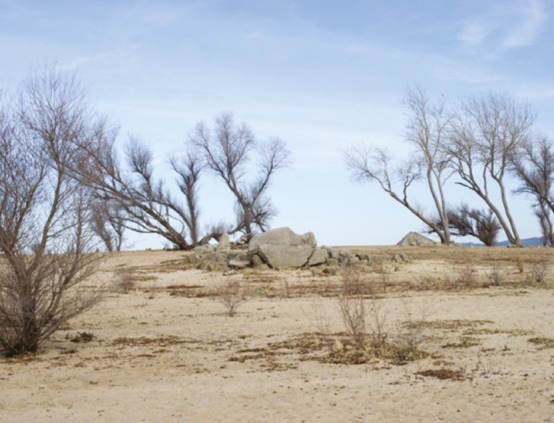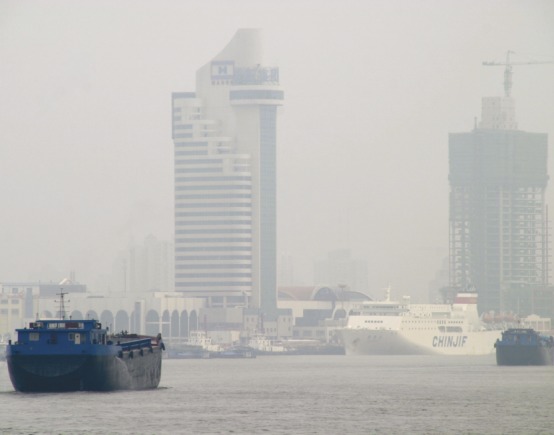Emissions from Canadian oil sand mining
Aircraft coming in for landing from mission flight in oil sands region. Image courtesy of Andrew Elford (Environment and Climate Change Canada, Gatineau, Canada).
Volatile organic compounds (VOCs) are associated with ozone and aerosol formation. VOC emission estimates from oil sands facilities are reported based on widely accepted estimation methods. However, uncertainties in the reports have not been evaluated, partly due to technical challenges tied to direct emissions measurements. Using an instrumented aircraft during summer 2013, Shao-Meng Li et al. (pp. E3756–E3765) developed an approach to determine VOC emission rates from four facilities in Alberta, Canada. The measured aggregate emission rate of VOCs was approximately 50 to 70 tons per day, depending on the facility. The facilities’ reported emission rates were lower than the aggregate rates by factors of approximately 2.0 to 4.5, indicating that reported emission rates were underestimated. For 11 of the 93 VOCs that were individually reported for all four facilities, the measured and reported emission rates were similar, whereas the measured rates for the rest of the VOCs were higher than the reported rates. Furthermore, the authors found that, depending on the facility, 9 to 56 VOC species were not included in emission reports, despite meeting minimum reporting requirements based on the measurements. According to the authors, the analyses suggest that improvements in VOC emission estimation methods could enhance the accuracy and completeness of emission estimates. — L.C.
Global warming and extreme climate events

Low-water conditions at Folsom Dam and Folsom Lake in Northern California. Image courtesy of John Chacon (California Department of Water Resources, Sacramento, CA).
Interest in the link between global warming and individual extreme climate events has increased over the past decade, partly due to increasing trends in the frequency and intensity of such events. Noah Diffenbaugh et al. (pp. 4881–4886) developed a systematic and replicable framework for the detection and attribution of extremes in large, complex climate datasets. The authors applied the framework to four different climate variables—peak summer monthly temperature, hottest daily temperature of the year, annual precipitation, and precipitation during the wettest 5-day period of the year—at points across the globe, and identified statistically significant trends over time for the variables. The observed trends contributed positively to the severity and frequency of maximum values for the temperature variables in more than 80% of the observed area, and to the severity and frequency of minimum annual precipitation and maximum 5-day annual maximum precipitation in approximately half of the observed area. According to the authors, rapid attribution of individual extreme events to global warming might be possible, but the findings underscore the role of physical processes that give rise to particular events. — B.D.
Synthetic natural gas in China

Shanghai, China. Image courtesy of Pixabay/3dman_eu.
Plans to increase the production of coal-based synthetic natural gas (SNG), an energy source that creates less air pollution but more CO2 emissions than coal, in China are estimated to produce up to approximately 57 billion cubic meters of SNG by 2020. Yue Qin et al. (pp. 4887–4892) modeled the influence of substituting that quantity of SNG for coal in a variety of end uses—residential, industrial, and power sectors—on air quality, health, and CO2 emissions. The model suggests that if China deploys SNG in the residential sector, outdoor air pollution and premature deaths may decrease 10 and 60 times more than if SNG is deployed in the industrial or power sectors, respectively. Specifically, using SNG in the residential sector was found to be tied to a reduction in premature deaths by approximately 32,000 annually. Across all three sectors, the use of SNG was tied to increased CO2 emissions, compared with coal or conventional natural gas. However, a comparatively smaller increase in CO2 emissions was found to be associated with the deployment of SNG in the residential sector rather than in the industrial or power sectors. According to the authors, using available SNG in the residential sector might provide the largest air quality and health benefits and smallest climate penalties, compared with allocation to the power or industrial sectors. — L.C.



